Executive Summary
Apple Inc and Microsoft Corporation are some of the leading brands in the electronic market that offer very high value to their customers. These two brands were chosen because of their massive online presence and the fact that they were able to withstand the millennium challenges in the electronic market in the early 2000s.
Analysis of the information from their websites shows that the two firms have taken unique positioning approaches to reach out to their target audience. While Apple Inc targets the middle and upper class members of the society, some products of Microsoft Corporation such as the Operating System target the entire market.
Some of the products from these companies, such as their Operating Systems, may act as substitutes. Others may be used as supplementary products, while others such as their Smart Watches may be direct competitors. These two firms are keen on offering high value to the clients, and this is evident in their positioning strategies.
Selection of the Company
Apple Inc and Microsoft are the two top brands that have strong online presence in the current market. These two companies offer supplementary products, though some of their products may be considered as substitute to one another.
The decision to choose the two companies was made after a careful review of their performance in the online market and their trends. The Apple brand has been voted the best brand in the world in a number of occasions, especially in 2009 and 2010 (Fill 2013, p. 54).
It has a massive online presence not only in the United States but also in the global market. It is a brand that is widely known for its high qualities. Although their products target the rich and the middle class, the brand is known even among the low class and their products admired by people across diverse demographical classes.
The company has maintained creativity in the face of stiff market competition. Microsoft is another very prosperous company. This firm has experienced massive growth since 1990s because of the creativity and effective management.
Microsoft is a household name. Anyone who has a personal computer user a number of Microsoft products, from Microsoft Word, Excel, PowerPoint, among other products. This brand has proven that it can withstand market competition. Many companies have come up with similar products such as Apple.
However, the products of Microsoft have remained above the market competition. Its operating system remains one of the best and most commonly used in the market.
Apple and Microsoft, two companies that were founded almost at the same time, have proven to be formidable companies capable of achieving great success in the market. It is worth analysing their brands and how they perform in the online market.
Positioning of the Retailers as Presented in Their Websites
Apple Brand
It will be important to conduct a detailed analysis of Apple brand’s positioning as presented in the firm’s website. Apple Inc has emerged as one of the top brands in the electronic market. According to Chaffey and Chadwick (2012, p. 82), when the firm its operations, it did not have a specific target market.
The firm had undefined positioning strategy because it had not clearly identifies which segment of the market was more appropriate. This was not until the return of Steve Jobs into the company that the company realised that there was a potential in the middle and upper class segments.
Since then, this firm has been positioning its brand to target this market segment. According to Koekemoer and Bird (2004, p. 67), Apple brand is positioned as a high quality product that offers more to the customers.
The company developed highly integrated devices that had several features to meet various needs of the customers. In order to appeal to the targeted group, Apple developed a unique brand symbol to help in differentiating its products in the market. The figure below shows the logo of Apple brand.
Figure 1: Apple Brand Logo

Source (Liudi 2009, p. 113)
As shown in the figure above, this firm considered using a logo of an apple fruit. De Chernatony, McDonald and Wallace (2011, p. 22) says that the choice of the brand name and symbol was to be represented by the fruit. Apple fruit is known for its high nutritional value and its benefits to human health.
The same quality of this fruit is what Apple Inc positions itself to offer to its clients.
Apple Inc offers a wide variety of products under the brand name Apple. According to Ray (2001, p. 38), Smartphone is one of the categories of Apple Inc’s products that have become very popular in the market today. Apple Inc is considered one of the pioneers of Smartphone.
The unique quality of this product enables it to offer clients more than what a normal phone would offer. It allows users to access the internet, make video calls, and have access to the social media, among other features. The figures below show some of their sleek Smartphone that has become very popular in the market today.
Figure 2: Sleek Apple Smartphone
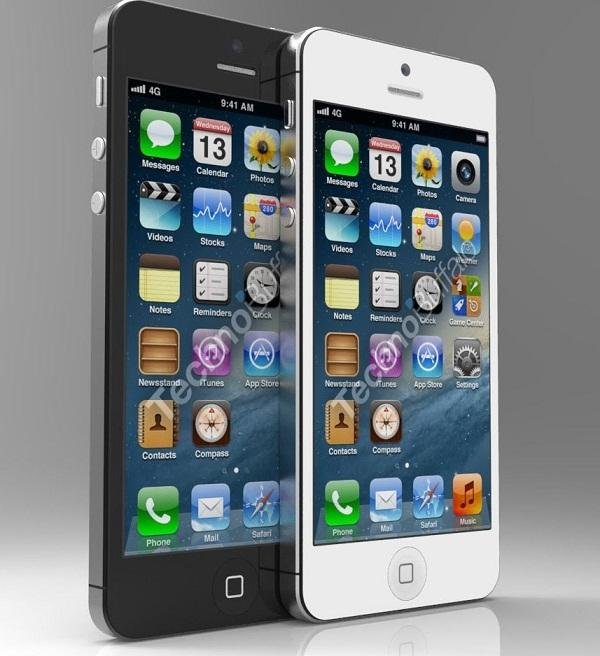
These products, as presented in Apple Inc’s website, offer more than just a simple phone call. It allows its users to manage various activities remotely, including monitoring the position of one’s car, intrusion into one’s homestead of office among others. Another popular product under the brand name Apple is the laptop named MacBook.
This is an ultra-slim laptop that has very unique features. The figure below shows one of the founders of this company, Steve Jobs, holding a MacBook during its launch.
Figure 3: Apple’s MacBook
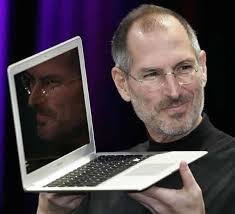
Source (Smith & Chaffey 2013, p. 78)
This product targeted the rich and the middle class. Its battery life, the screen, the pads, its size and the shape outsmarted the existing brands such as HP, Toshiba, and Compaq among others. The company priced the product at premium and it has remained so to date.
Analysis of the company’s website shows that Apple Inc has not been keen on using personalities to support the marketing of its brand. According to Wernerfelt (2006, p. 240), in 1984, Apple used the Super Bowl XVIII to strengthen its brand in the market. This worked well for the firm.
However, it has not been keen to use ambassadors to market its brand, though it has associated itself with some of the top athletes and celebrities once in a while when marketing specific products.
The brand architecture of Apple was defined by its name. The initial owners of this company decided to base the brand architecture on the name (Yadin 2001, p. 88). Since then, the brand architecture has had minor variations in terms of the colour used and the background.
However, the image of the apple fruit has been maintained all through. It is also important to analyse Apple’s brand-width and depth. According to Belk (2010, p. 54), some brands have sub-brands to help market various product categories.
However, Apple uses brand name for all its products in various categories. The firm produces phones, personal computers, television sets, iPods, iPad, tablets, and watches, among other devices, all under the brand name Apple. The marketing strategy that this firm has been using to market its products is unique.
The firm uses both social and mass media to market the new products. Although these new products have specific name that may pass as Apple’s sub-brand, the company still insists on using the brand name Apple. This has helped the firm in two ways.
It helps to strengthen the brand name in the market by constantly using it irrespective of the type of product the firm is advertising. The strategy also helps to popularise the new product in the market within a very short time.
By using a brand that is widely known and valued in the market, the new products get to penetrate the market at a faster rate than would be the case when the product uses its new name.
Microsoft Brand
Microsoft is one of the top brands in the market that have massive online presence. The brand positioning targets the general market without specifically focusing on a given segment. As mentioned previously, almost all the users of personal computers rely on the products of Microsoft, from its operating system to the windows.
This means that it is not possible to target a specific segment of the market. However, the firm has been diversifying its product offering to include electronic such as smart watch and tablets. These products exclusively target the rich and a section of the middle class based on their positioning and strategies.
Kapferer and Bastien (2012, p. 214) say that these electronics are yet to penetrate the market because of the fierce market competition posed by companies such as Apple, Samsung, and Sony among others. Microsoft has been consistent when it comes to its brand symbol.
The firm has adjusted the brand logo a number of times but the name in the logo and the image has never changed over this period. The following figure shows the current brand logo for this firm.
Figure 4: Microsoft Brand Logo
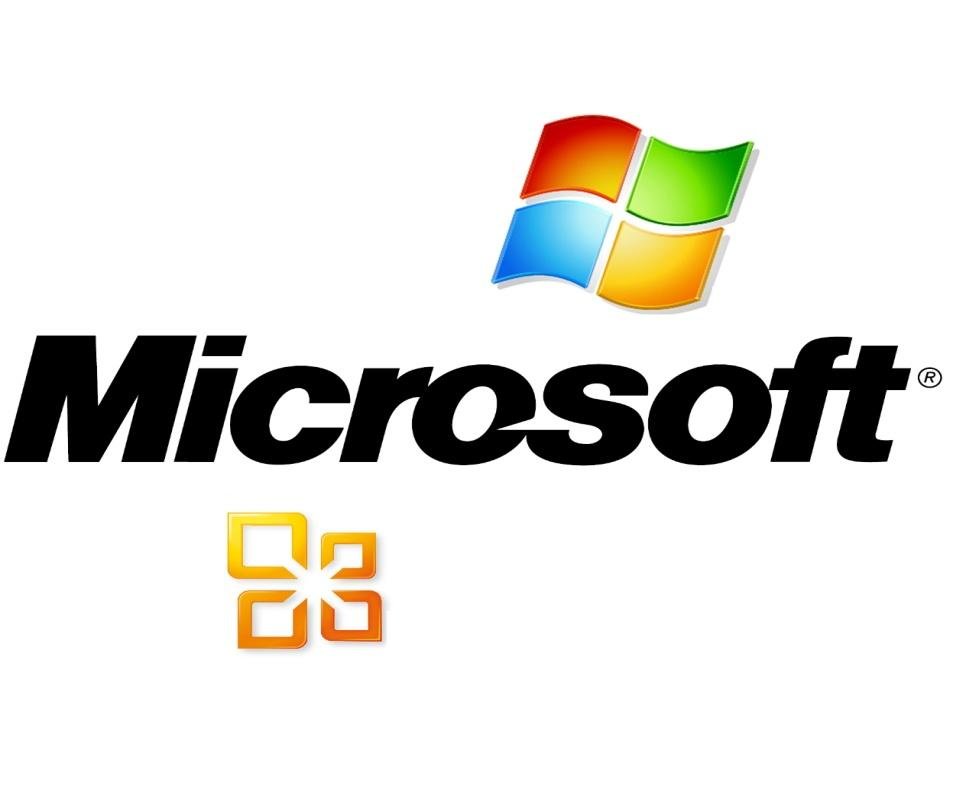
Source (Okonkwo 2010, p. 87)
Microsoft offers a wide range of software for personal computers. The Microsoft’s operating system is one of the widely used operating systems in personal computers. Its ease of application and efficiency has made it very popular in the market. The windows such as word, excel, publisher, and PowerPoint among others are also very popular.
Other than the long series of software, this firm also offers smart watches that have other unique features such as the ability to make voice calls, access internet, send messages, and even detect presence of dangerous weapons such as guns or explosives. The figure below shows such a unique product from this company.
Figure 5: Microsoft’s Smart Watch
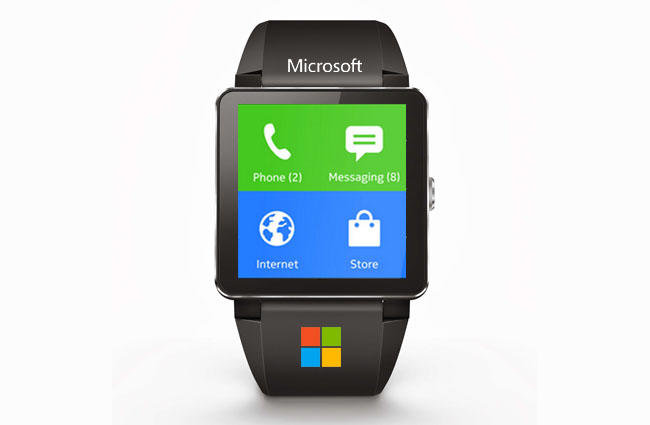
Source (Ricca & Robins 2012, p. 54)
Such products exclusively targets high-end customers with the capacity to pay premium prices for the product. According to Samli (2013, p. 44), Microsoft is also making an entry into the internet services industry.
However, the company is still cautious in this front, only preferring to make internet devices such as the wifi systems instead of offering the actual internet services. Just like Apple Inc, Microsoft has not been keen on using personalities and celebrities to market its brand or specific products.
This firm has been investing heavily on advertisement, from the mass media to the new social media that has become very popular among the youth (Knox & Gruar 2007, p. 124). However, in these strategies, it is evident that the firm has given less focus in the use of public figures to gain competitive edge in the market.
Diagram 4 above shows the brand architecture of Microsoft. The design closely resembles a window, as a true reflection of the name Microsoft Windows. The logo has four main colours. From the company’s website, it is apparent that Microsoft has a wide brand-width in terms of product offerings.
The firm offers a wide range of products, from software to hardware, all under the brand name Microsoft. The firm has been using different strategies to market different products based on the target market (Lehmann & Winer 2008, p. 90).
The products that majorly target the young consumers are advertised using the social media, especially Facebook and YouTube. On the other hand, products that target the elderly are advertised using the mass media.
Comparison of the Positioning of the Two Companies
A critical analysis of the positioning strategies used by Apple Inc and Microsoft as presented in their websites shows a number of similarities and differences. In this section, it will be necessary to evaluate the positioning strategies of the two companies in order to identify the strategies they share, and those that are unique to each firm.
The Similarities
According to Kwaku and Murray (2004, p. 45), although Microsoft and Apple Inc are not direct competitors, these two firms share a number of strategies. Some of their products are very close substitutes, a fact that has made the companies share a number of marketing strategies.
According to Gabrielsson, Gabrielsson and Tomi (2012, p. 31), these two companies share a similar business model that is cantered on innovation.
Cook (2005, p. 65) says that Apple Inc and Microsoft Corporation survived the challenges that many technology firms faced during the Bubble in early 2000s because of their innovativeness not only when it comes to manufacturing, but also in production.
The figure below shows the business model that is used by these two companies.
Figure 6: Business Model
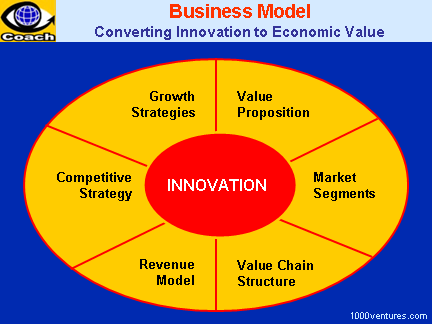
Source (Cavusgil & Shaoming 2004, p. 55)
In this model, there are six areas that a firm must emphasise on in order to remain innovative. The first one is vale preposition. Both Apple Inc and Microsoft Corporation have been very keen when it comes to their value proposition.
They know what to tell the customer about each product they have in the market, especially when the product targets the high-end customers. Defining the market segment is the second factor (Keller, Aperia & Georgson 2012, p. 34).
The websites of the two companies clearly demonstrates the segments of the market that each of the two companies target. Apple targets the rich and the middle class. Microsoft also has specific products that target the rich such as its Smart Watch.
The third factor is having a clear value chain structure. Both companies have close control over the value chain, especially from the production stage to the stage when the product is delivered to the clients.
However, De Chernatony 2010, p. 62) says that these electronic firms are increasingly losing control over the sources of raw materials, a fact that may affect their value chain in future. Having a practical revenue model is the fourth factor in this model.
Wiedmann (2013, p. 89) says that Apple Inc and Microsoft are some of the firms that have attractive revenue models. One of the major areas of strength of these two firms is their stable flow of income. This has enabled them to sponsor various innovative projects that have propelled their position in the market.
The fifth factor is having a competitive strategy. Competition is stiff in the market where these two firms operate. In order to manage the market competition, these firms have come up with competitive models to help them gain competitive edge over their rivals.
Microsoft Corporation has been ahead of market competition despite the emergence of numerous companies in the United States and Europe because of its effective competitive strategy.
Similarly, Apple has been able to withstand the stiff competition posed by other electronic firms such as Samsung, Sony, HP, and Toshiba among others because of its competitive model (Kapferer 2008, p. 32). The last factor in this model is the growth strategies.
Besides these shared strategies, these two companies also have a number of products that offer same value to the clients. Both companies offer Smart Watch to the market.
The Smart Watch from these two companies share a lot in common. Apple Inc has also been producing its own operating system that has various common features to the Microsoft’s Operating system.
The Dissimilarities
According to Aaker (2009, p. 43), Microsoft Corporation and Apple Inc have never been direct competitors in the market. This is because the two firms specialise on two different areas. Although Microsoft has started producing a number of hardware, its main area of focus has been software.
Most of its income comes from the sale of software such as the operating system and the windows. On the other hand, Apple specialises on the production of hardware. In most of the cases, the operating system from Apple Inc is only meant for Apple products.
This means that they do not pose any direct threat to the products of Microsoft. The marketing approach taken by the two companies also differs a little. Apple Inc has made a massive shift from the use of mass media to the use of social media.
According to the research by Ansio and Mattila (2009, 1099), Apple Inc is one of the top users of social media marketing today. On the other hand, Microsoft has taken cautious move towards the shift from the use of social media to the use of mass media.
Even though the firm is using social media to market specific products, the approach taken by Apple Inc is bolder.
Feedback from the Report
The online market has become very important and many firms are repositioning their brands to create maximum value to various stakeholders in this new setting.
According to Govers and Go (2009, p. 78), as the number of the middle class continue increasing across the world, the number of those with the capacity to visit the brick-and-moter stores continue decreasing. Apple Inc and Microsoft Corporation are some of the firms that have been keen to capitalise on the online market.
Young adults form the major market segment for Apple Inc. In order to reach out to this market segment effectively, this firm has embarked on active online marketing strategies, especially through Facebook and YouTube.
The social media platform has forced this firm to have e-shops in selected markets, majorly in the United States and Europe (O’Reilly & Kerrigan 2010, p. 53). Microsoft has taken even a more aggressive approach when it comes to e-marketplace. Most of the software from Microsoft is sold through online means in various markets across the world.
The customer does not necessarily need to visit Microsoft shops to purchase their software. Once they make e-payments, they can get the product delivered to them directly through online means.
Online marketing has been very beneficial to this firm as it spreads its operations to the global market. Having offices in these markets is not easy. The firm has, therefore, repositioned its products to fit into the online market. Customers can get detailed description of the product through online means (Cook 2008, p. 71).
Both Apple Inc and Microsoft have developed a reputation when it comes to delivering value to their customers. This has helped them to make positive progress in the online market. Customers are assured of high value whenever they purchase products from their websites.
Knight (2006, p. 18) says that convincing online customers is more challenging than customers visiting a brick-and-moter shops. The attractive design of the shelves in physical stores that may make a client to make an impulse purchase does not exist in online markets.
In order to offer maximum value to the customer in terms of explaining characteristics of a product, and to the shareholders in terms of sale, these firms have come up with interactive websites where clients can chat with the sales representatives.
List of References
Aaker, D 2009, Strategic Market Planning, John Wiley & Sons, New York.
Ansio, T & Mattila, E 2009, Marketing Strategy Formulation: Pure versus Mixed Strategies, European Journal of Marketing, vol. 30. no. 12, pp. 1097-1101.
Belk, R 2010, Research in consumer behavior, Emerald, Bingley.
Cavusgil, S & Shaoming, S 2004, Marketing Strategy-Performance Relationship: An Investigation of the Empirical Link in Export Market Ventures, Journal of Strategic Marketing, vol. 58. no. 1, pp. 1-21.
Chaffey, D & Chadwick, F 2012, Digital Marketing: Strategy, Implementation & Practice, Pearson Education, Harlow.
Cook, J 2005, Understanding Marketing Strategy and Differential Advantage, Journal of Business Strategy, vol. 49. no. 2, pp. 137-142.
Cook, V 2008, Marketing Strategy and Differential Advantage, Journal of Marketing Management, vol. 47. no. 2, pp. 68-75.
De Chernatony, L 2010, From brand vision to brand evaluation, Butterworth Heinemann, Oxford.
De Chernatony, L, McDonald, M & Wallace, E 2011, Creating powerful brands, Routeledge, London.
Fill, C 2013, Marketing Communications: brands, experiences and participation, Pearson Education, Harlow.
Gabrielsson, P, Gabrielsson, M & Tomi, K 2012, Marketing Strategies for Foreign Expansion of Companies Originating in Small and Open Economies: The Consequences of Strategic Fit and Performance, Journal Harvard Business Review, vol. 20, no. 2, pp. 25-48.
Govers, G & Go, F 2009, Place branding, Palgrave McMillan, Basingstoke.
Kapferer, J & Bastien, V 2012, The luxury strategy: Break the rules of marketing to build luxury brands, Kogan Page, London.
Kapferer, J 2008, Strategic Brand Management, Kogan Press, New Delhi.
Keller, K, Aperia, T & Georgson, M 2012, Strategic Brand Management: A European Perspective, Prentice Hall, New York.
Knight, G 2006, Entrepreneurship and Marketing Strategy, Journal of International Marketing, vol. 8. no. 2, 12- 32.
Knox, S & Gruar, C 2007, The Application of Stakeholder Theory to Relationship Marketing Strategy Development in a Non-Profit Organisation, Business Strategy Review, vol. 75. no. 2, p. 115-135.
Koekemoer, L & Bird, S 2004, Marketing communications, Juta Academic, Lansdowne.
Kwaku, A, & Murray, J 2004, Antecedents and Outcomes of Marketing Strategy Comprehensiveness, Journal of Marketing, vol. 68. no. 4, p. 33-46.
Lehmann, D & Winer, R 2008, Analysis for Marketing Planning, McGraw-Hill, New York.
Liudi, D 2009, Marketing communications: Interactivity, communities and content, Financial Times, Harlow.
O’Reilly, D & Kerrigan, F 2010, Marketing the Arts: A Fresh Perspective, Routledge, London.
Okonkwo, U 2010, Luxury online: Styles, strategies, systems, Palgrave Macmillan, Basingstoke.
Ray, M 2001, A Decision Sequence Analysis of Developments in Marketing Communication, Journal of Marketing, vol. 37. no. 1, pp. 29-38.
Ricca, M & Robins, R 2012, Meta-luxury: Brands and the culture of excellence, Palgrave Macmillan, New York.
Samli, A 2013, International consumer behavior in the 21st century: Impact on marketing strategy development, Springer, New York.
Smith, P & Chaffey, D 2013, E-Marketing Excellence: Planning and Optimising your Digital Marketing, Butterworth-Heinemann, Elsevier.
Wernerfelt, B 2006, Efficient Marketing Communication: Helping the Customer Learn, Journal of Marketing Research, vol. 33, no. 2, pp. 239-246.
Wiedmann, K 2013, Luxury marketing: A challenge for theory and practice, Gabler, Wiesbaden.
Yadin, D 2001, Creative marketing communications: A practical guide to planning, skills and techniques, Kogan Page, London.